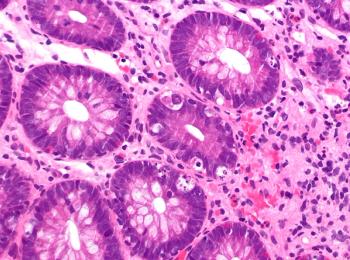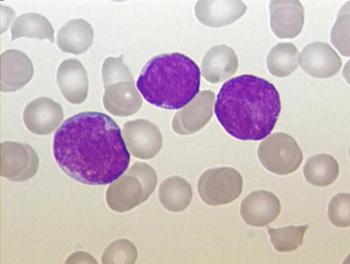
Hhex Protein Essential for AML, Could Be Therapeutic Target
A laboratory study found that the Hhex protein is overexpressed in acute myeloid leukemia cells and is necessary for their propagation but not for normal myelopoiesis.
A laboratory study found that the Hhex protein is overexpressed in acute myeloid leukemia (AML) cells and is necessary for their propagation but not for normal myelopoiesis. Targeting Hhex could act to suppress AML proliferation without harming normal cells.
The new study, led by Matthew P. McCormack, PhD, of the Walter and Eliza Hall Institute of Medical Research in Melbourne, Australia, involved mice where the Hhex protein was eliminated and human cell lines as well. The results were
First, the authors showed that human cell lines from AML patients expressed Hhex at a rate two to four times that of normal hematopoietic stem cells (HSCs). Next, they showed that the protein is not actually necessary for the development and function of myeloid progenitor cells, either in vitro or in vivo in mice.
They then injected retroviruses expressing the oncofusion driver MLL-ENL into mice with and without Hhex, and the results were striking. All Hhex-positive mice succumbed to myeloid leukemia within 11 weeks, while none of the Hhex-negative mice developed leukemia within a 4-month observation period. Together, these results suggests that while Hhex is not necessary for normal adult HSC function, it is essential for the development of MLL-ENL–induced AML.
Further testing showed that the protein is also necessary for maintenance of the disease. The researchers were able to induce systemic loss of Hhex in adult mice using tamoxifen-regulated Cre recombinase, and found survival of treated mice doubled compared to control animals. Furthermore, secondary leukemias that developed emanated specifically from a fraction of cells in which Hhex was not actually deleted by the treatment.
In normal mice without the AML oncofusion driver, deletion of Hhex had essentially no effect, again showing that the protein is necessary for the disease but not for normal function.
The loss of Hhex led to expression of certain tumor suppressors that can halt AML cell differentiation. When Hhex is present, it binds to the Cdkn2a locus, and when deleted the Cdkn2a-encoded tumor suppressor proteins p16INK4a and p19ARF are expressed.
Taken together, these results suggest that Hhex could be a promising target for halting the spread of AML, potentially with few side effects. “We showed blocking the Hhex protein could put the brakes on leukemia growth and completely eliminate AML in preclinical models,” McCormack said in a
Newsletter
Stay up to date on recent advances in the multidisciplinary approach to cancer.

















































































